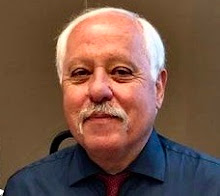This year marks the 40th anniversary of my
arrival in the Upper Wenatchee River Valley. Having accepted a job as a “trail
dog” on the Lake Wenatchee Ranger District, I initially wasn’t even sure of the
exact location of the place, only that it was somewhere in the northern reaches
of the State of Washington.
The valley was named for the Wenatchi tribe, the natives in residence when white settlers first arrived in the early 19th century. The translation is: “river which comes from canyons” or “robe of the rainbow.” The city shares its name with the Wenatchee River, its headwaters at Lake Wenatchee and the Wenatchee National Forest.
As
spring quarter at the University of Oregon in 1975 came to a close, my college
roommate Vince and I, both seasonal employees for the U.S. Forest Service, were
busily applying for various and sundry positions on ranger districts throughout the Pacific
Northwest. We were looking for new gigs, new adventures.
Having
worked at Crater Lake as a tour guide on the boats, and a forestry technician on the Malheur National Forest, I cast my gaze toward
Washington. The two of us applied to over two-dozen
forests in Oregon, Washington and Idaho. Not surprisingly, we netted some
interesting results that spring from forests far and wide.
By May, I had received offers on interregional fire suppression crews -- also known as “hotshots” -- on the Okanogan and Siskiyou National Forests, timber crews on the Siuslaw and Willamette Nationals Forests, a lookout position on the Wallowa-Whitman National Forest and, interestingly, as a lifeguard on the Winema National Forest patrolling a public swimming area in a USFS campground on Klamath Lake.
Stunned,
I hurried home, called the Lake Wenatchee Ranger District and accepted the
position. I had met a girl who worked at Lake Wenatchee the summer before
through a fellow seasonal employee on the Malheur National Forest in
Prairie City and was immediately smitten. At that point, it was Lake Wenatchee
or bust.
We have
many wonderful memories from our place in Shugart Flats, and now we’ve upgraded
our accommodations from a travel trailer to a mountain hut (or “montagna capanna” in Italian), not unlike those found throughout The Alps from France to
Slovenia. Great spot to enjoy the “tonic of wildness,” as Thoreau so aptly put
it.
The valley was named for the Wenatchi tribe, the natives in residence when white settlers first arrived in the early 19th century. The translation is: “river which comes from canyons” or “robe of the rainbow.” The city shares its name with the Wenatchee River, its headwaters at Lake Wenatchee and the Wenatchee National Forest.
Truth be told, in addition to securing a summer job roaming
the wilderness, I went north for a girl. Didn’t get that girl, though. Instead,
I met another girl, a lookout on an adjacent district, at a U.S. Forest
Service training session in Ellensburg. I’ve been married to that girl for
almost 37 years now. Here’s how it all started:
Though
I should have graduated that June, my approach of working the full 180-day
appointments for the USFS meant that I only could attend two quarters a year, thus
delaying my projected graduation date. Simple economics, really: I had no money.
But seasonal USFS jobs allowed me to finance my higher education.
By May, I had received offers on interregional fire suppression crews -- also known as “hotshots” -- on the Okanogan and Siskiyou National Forests, timber crews on the Siuslaw and Willamette Nationals Forests, a lookout position on the Wallowa-Whitman National Forest and, interestingly, as a lifeguard on the Winema National Forest patrolling a public swimming area in a USFS campground on Klamath Lake.
As
June began, my plan was to head to Baker City for the lookout gig when fate
interceded. Meeting Vince for an end-of-the-quarter beer at Taylor’s, he
announced that I had received yet another job offer, this time on trail crew. “Oh,
yeah?” I asked. “Which district this time?” “Lake Wenatchee” came his reply.
That
relationship didn’t pan out. But I fell in love with the Wenatchee Valley and later,
a USFS lookout from Naches. All told, I worked eight seasons for the Wenatchee
National Forest to fund my college education and then graduate school. After
moving back to Eugene, we purchased our mountain property near Lake Wenatchee
in 1988.











